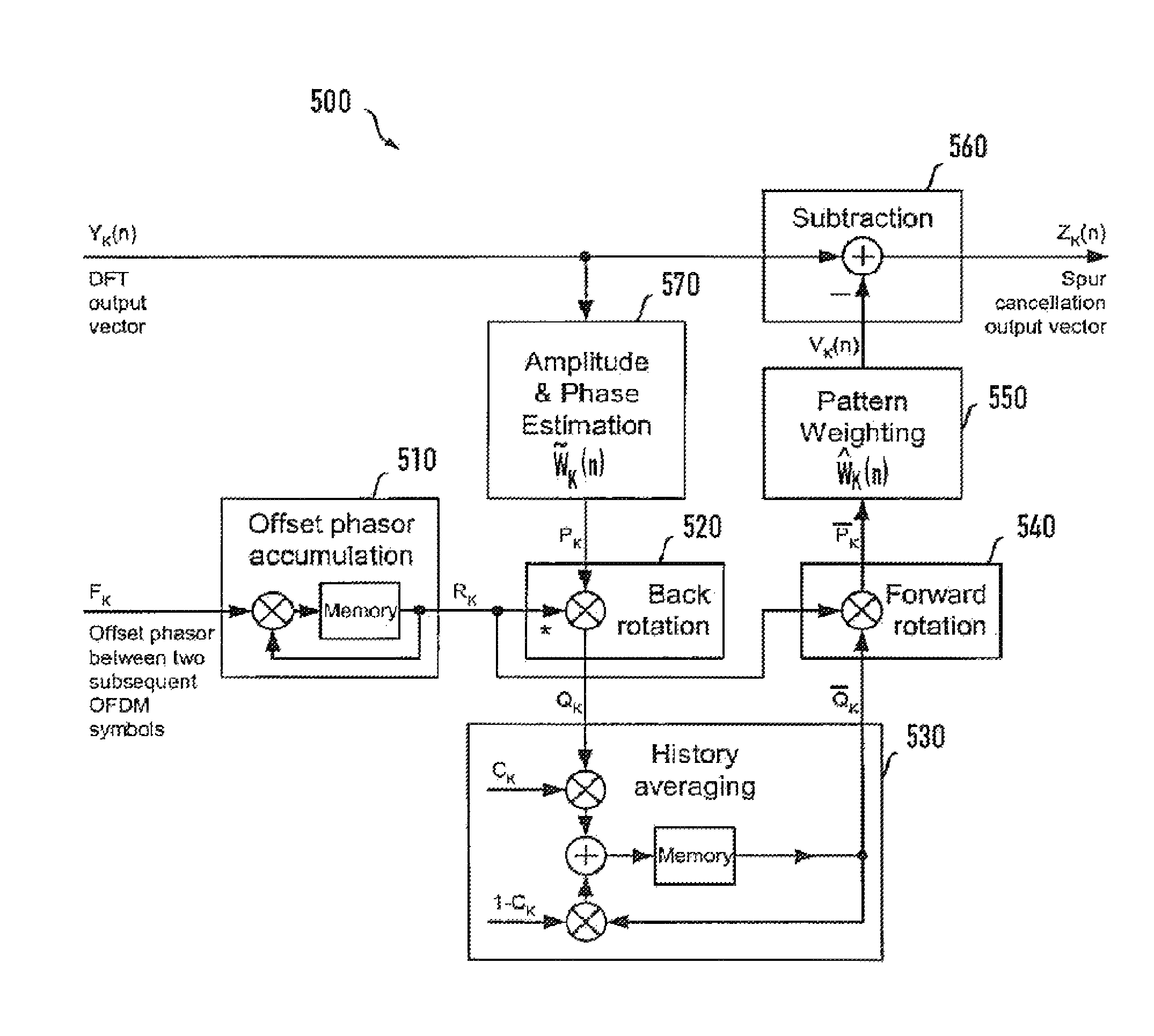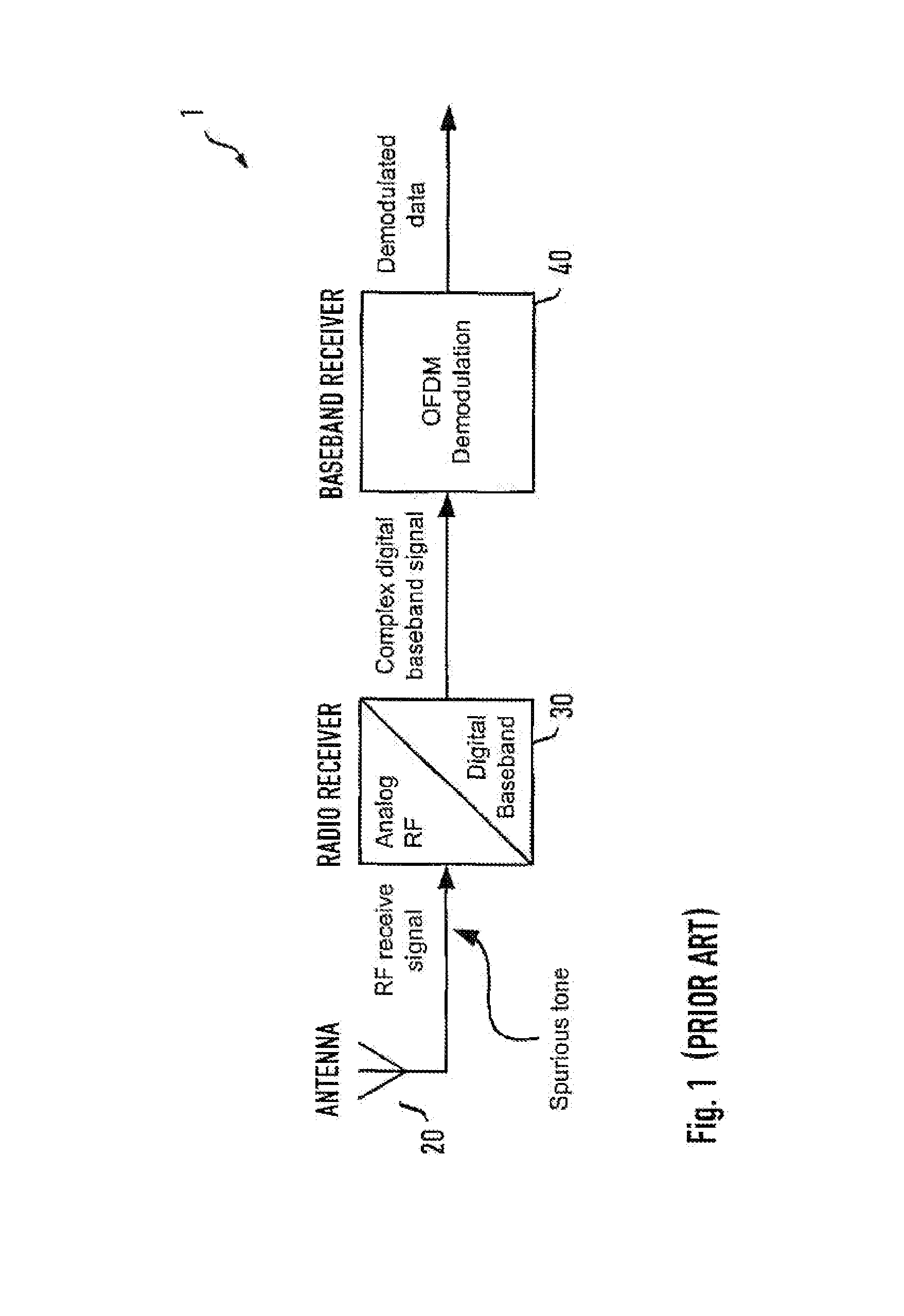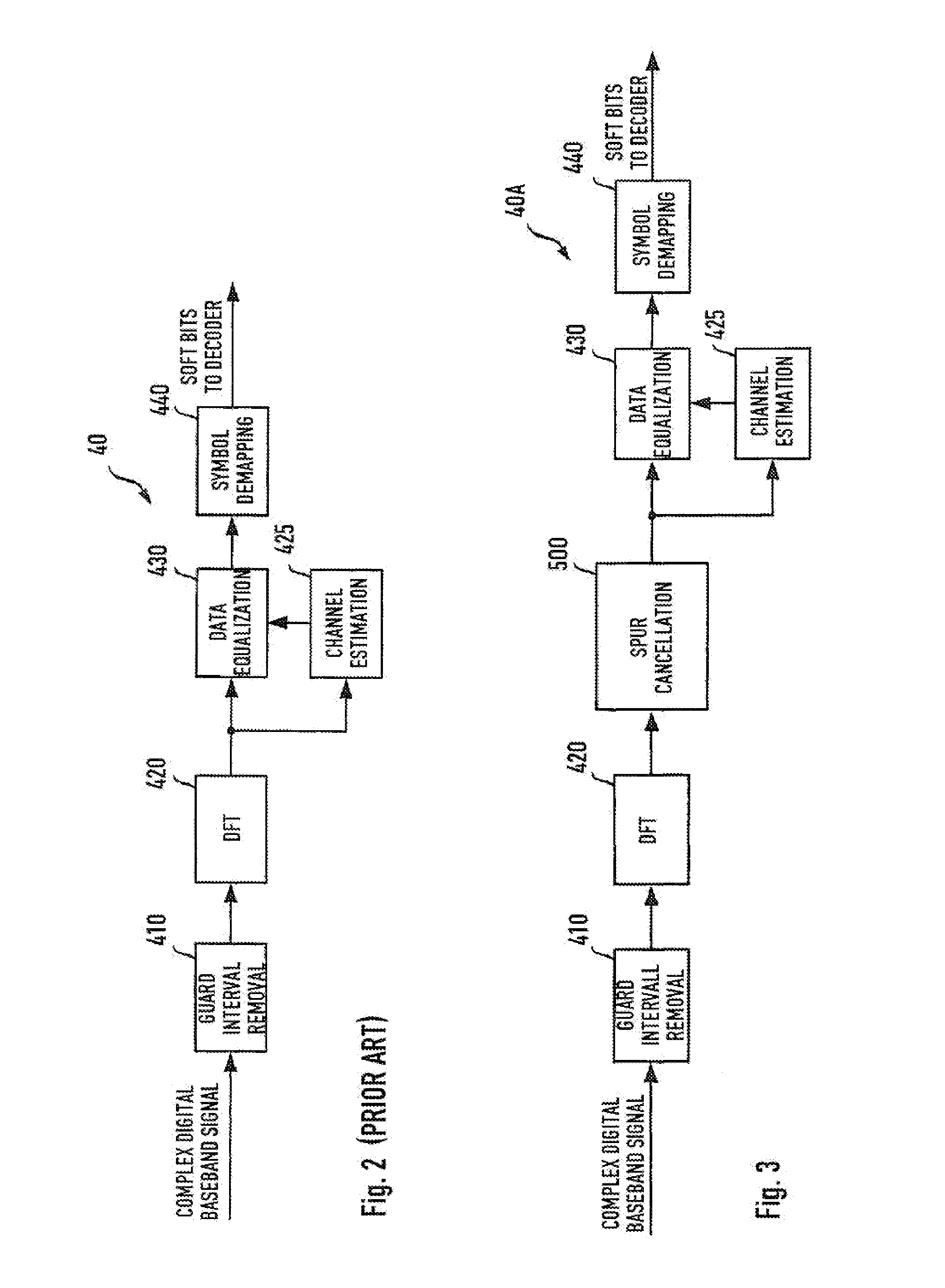Method and apparatus to cancel additive sinusoidal disturbances in OFDM receivers
a receiver and additive sinusoidal technology, applied in the field of method and apparatus to cancel additive sinusoidal disturbances in ofdm receivers, can solve the problems of reducing receiver sensitivity, reducing receiver sensitivity, and affecting the operation of the baseband system, so as to avoid the degradation of receiver sensitivity
- Summary
- Abstract
- Description
- Claims
- Application Information
AI Technical Summary
Benefits of technology
Problems solved by technology
Method used
Image
Examples
Embodiment Construction
[0014]FIG. 1 shows a schematic block diagram of an OFDM receiver 1 in which the present invention may be implemented. An analog OFDM radio signal is received via an antenna 20 and is fed into a radio receiver 30 where it is converted to a digital complex baseband signal. Typically, radio receiver 30 consists of a low noise amplifier, a mixer which is controlled by a local oscillator, a band selection filter, further amplifier stages and optionally a second mixer, an analog-to-digital converter, and a digital decimation filter. Radio receiver 30 outputs a digital complex baseband signal. This signal is fed into a digital OFDM baseband demodulator 40, from where demodulated data are output.
[0015]FIG. 2 is a block diagram of a typical OFDM demodulator 40 as shown in FIG. 1, as it is known from the prior art. The input signal which is a digital complex baseband signal supplied from radio receiver 30 of FIG. 1 is fed to a guard interval removal unit 410 where it is cut into blocks of sam...
PUM
 Login to View More
Login to View More Abstract
Description
Claims
Application Information
 Login to View More
Login to View More - R&D
- Intellectual Property
- Life Sciences
- Materials
- Tech Scout
- Unparalleled Data Quality
- Higher Quality Content
- 60% Fewer Hallucinations
Browse by: Latest US Patents, China's latest patents, Technical Efficacy Thesaurus, Application Domain, Technology Topic, Popular Technical Reports.
© 2025 PatSnap. All rights reserved.Legal|Privacy policy|Modern Slavery Act Transparency Statement|Sitemap|About US| Contact US: help@patsnap.com



